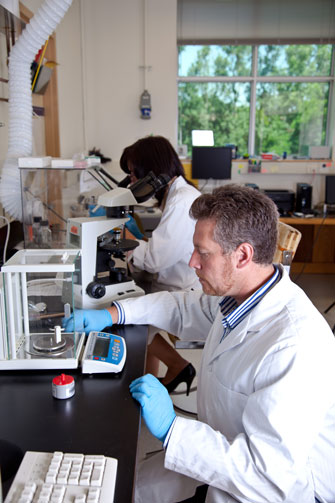Calibration Services
What is the Definition
of Calibration?
|
Calibration can mean different things to different people, depending on who you ask. You may have heard someone say, “I took my car into the shop for a low tire and the technician calibrated it to the correct pressure.” That use of the word calibrate means ‘to adjust’. Other people may think of calibration as a repair service for their instrument. However, in the world of Metrology, the word Calibration carries a distinct meaning, as defined by the VIM (International Vocabulary of Metrology):
|
 |
What does the term calibration mean in Metrology?
You may look at that definition and think to yourself, “What did that just say??” In layman’s terms, it is the comparison of an instrument whose value is in question (the Unit Under Test, or UUT) to another instrument whose value is known (the Metrology Standard) and is more accurate than the UUT (i.e., contains a much smaller uncertainty). A calibration is not an adjustment, correction, or repair though. Those are separate actions that could be taken as a result of the calibration action, which is simply to report how much error is in the UUT. If the error exceeds a pre-determined limit (usually the Original Equipment Manufacturer’s warranted performance specifications) then an adjustment or repair may be needed in order to minimize the UUT error.
The services that Transcat provides ensures that all As Found data is taken before any adjustments or repairs are performed. This is because measurement traceability requires the user of the instrument to evaluate the decisions that had been made over the UUT’s most recent calibration cycle to determine if the UUT error would have caused those decisions to change. In other words, if a product test passed based on the value the UUT provided, and after the UUT’s next calibration it was determined the UUT error would have caused that product to fail, then a recall or retesting of that product is required. It’s not just about the calibration of the instrument before it is used; it is also critical to ensure the instrument remained within acceptable limits the whole time it was being used, which is what the next calibration’s As Found data reveals. Then, if necessary, adjustments are made to the instrument (usually at no additional charge) and a complete set of As Left data is captured. This As Left data lets the user know the UUT is again ‘good to go’. If an adjustment to the UUT cannot be made for some reason, Transcat places a note on the certificate indicating the reason for this situation. If no adjustments are required, then the As Left will be the same as the As Found data.

